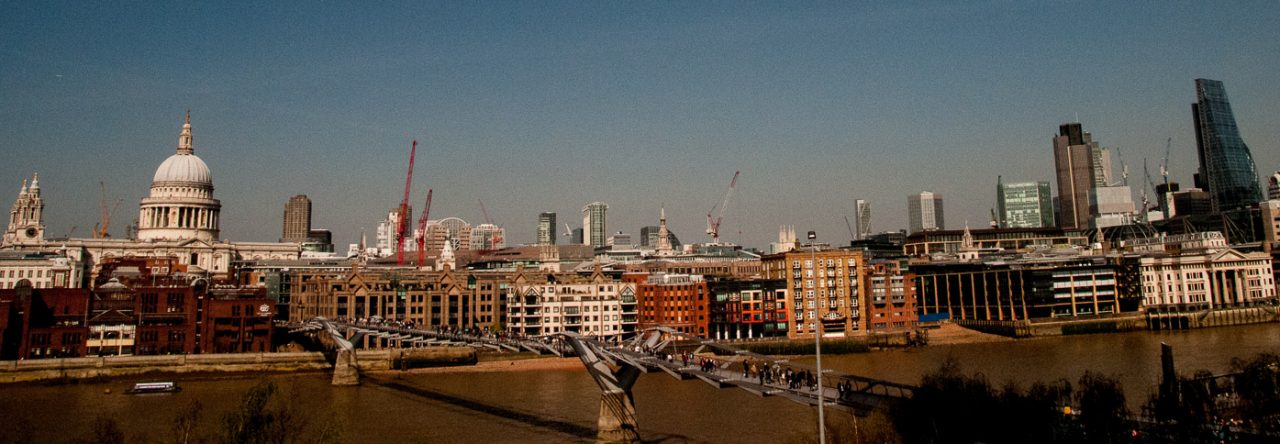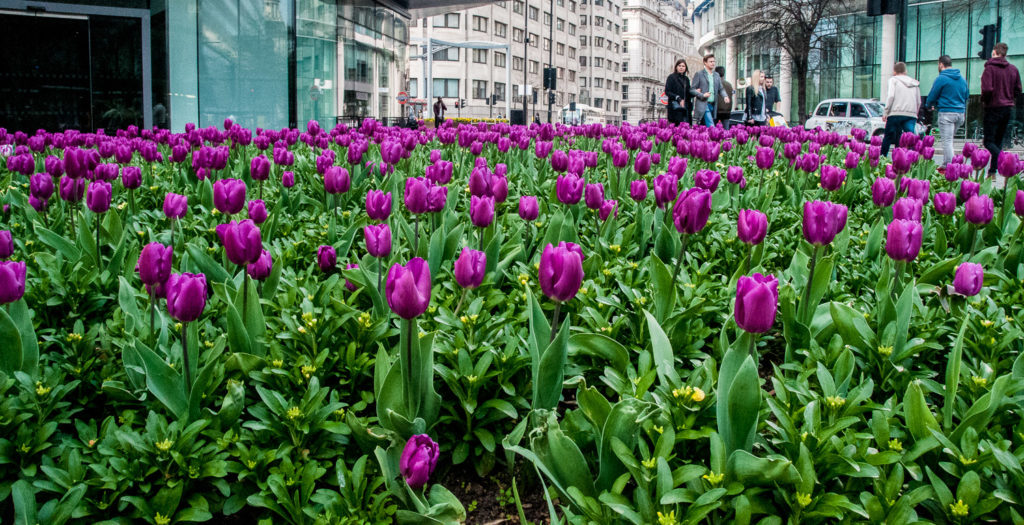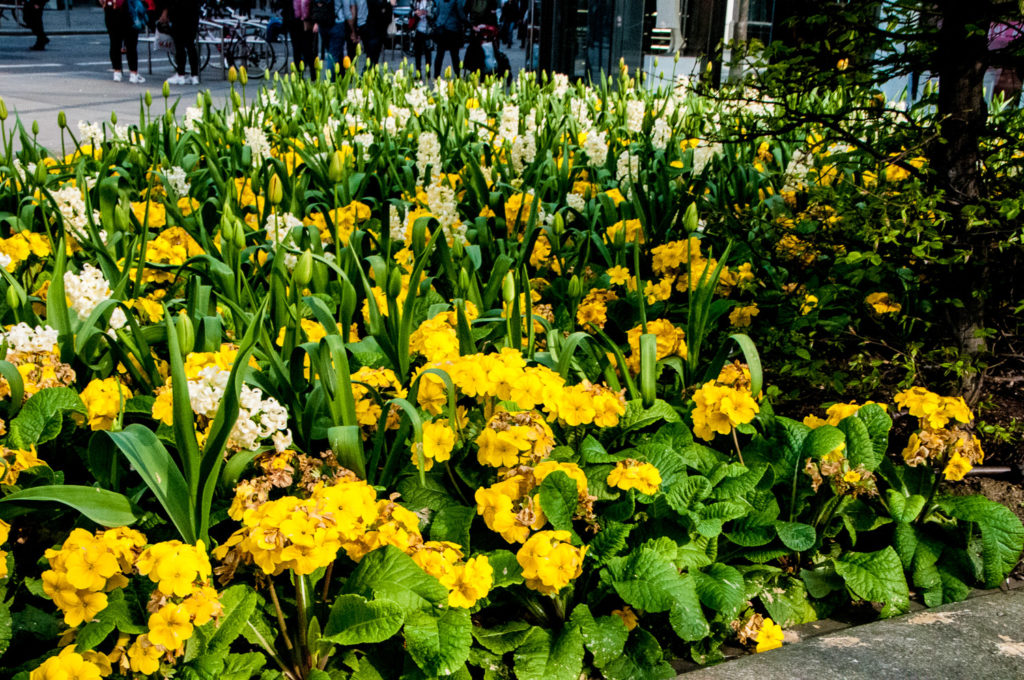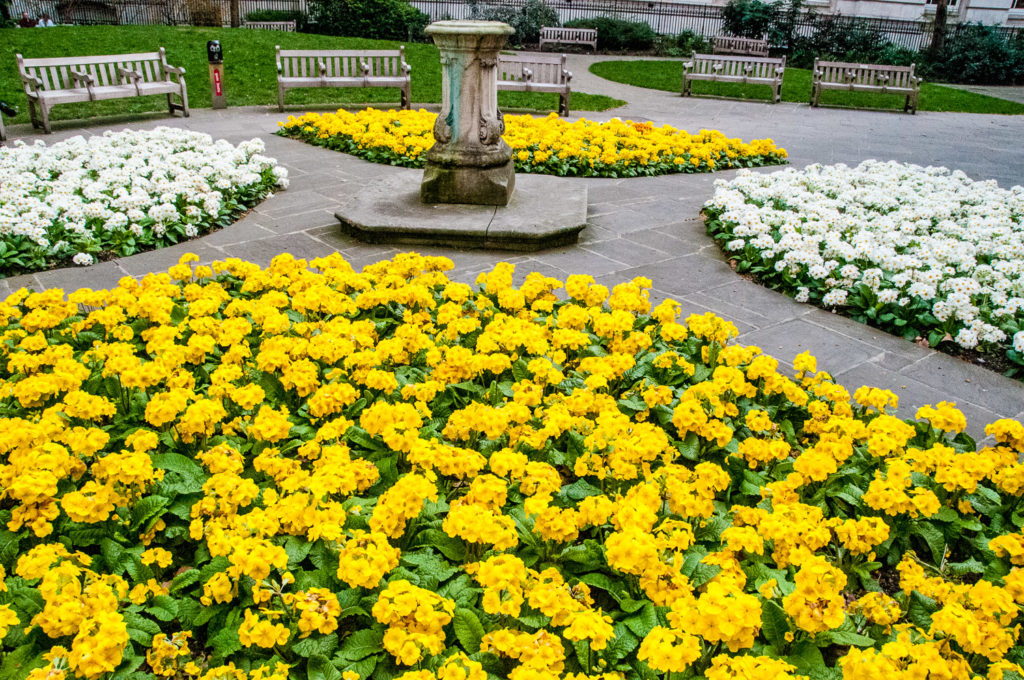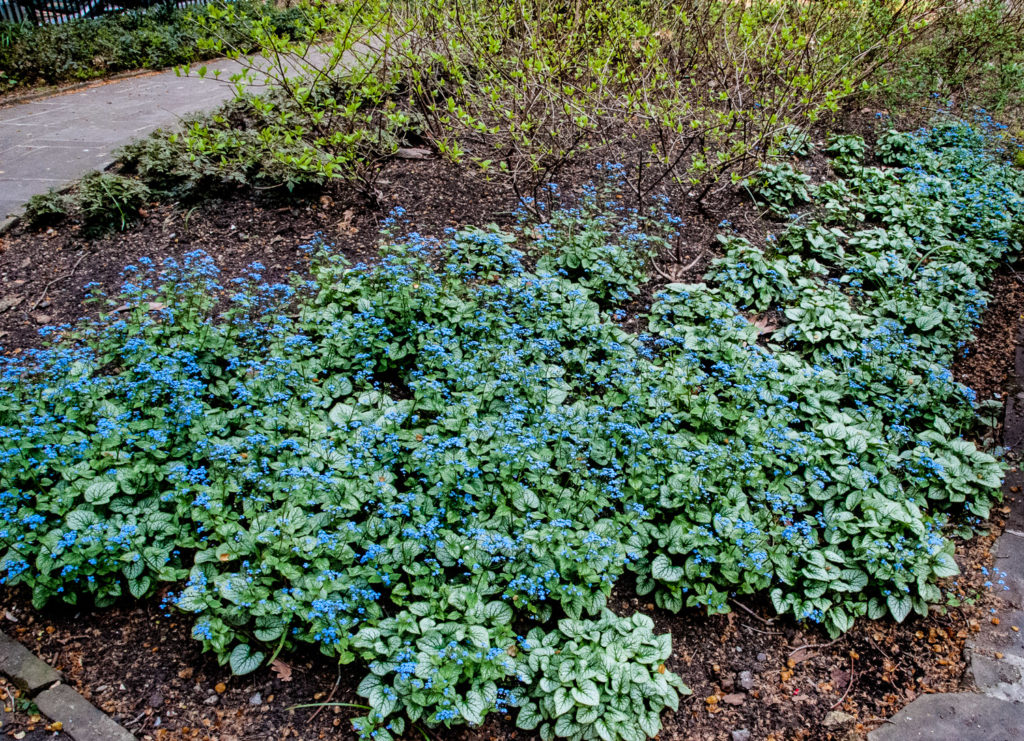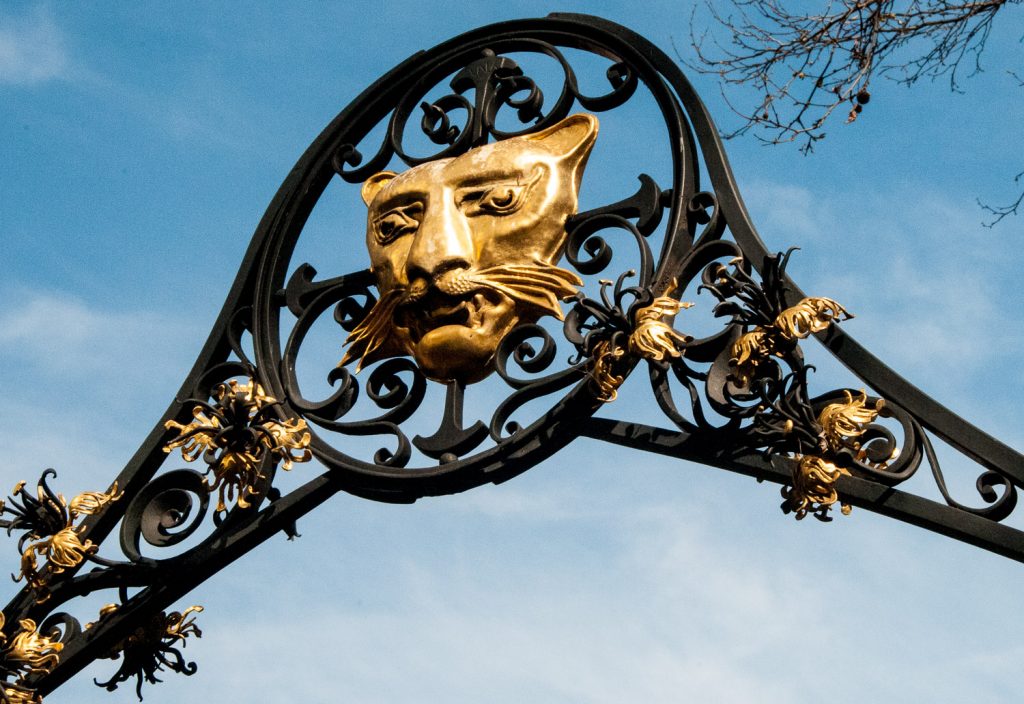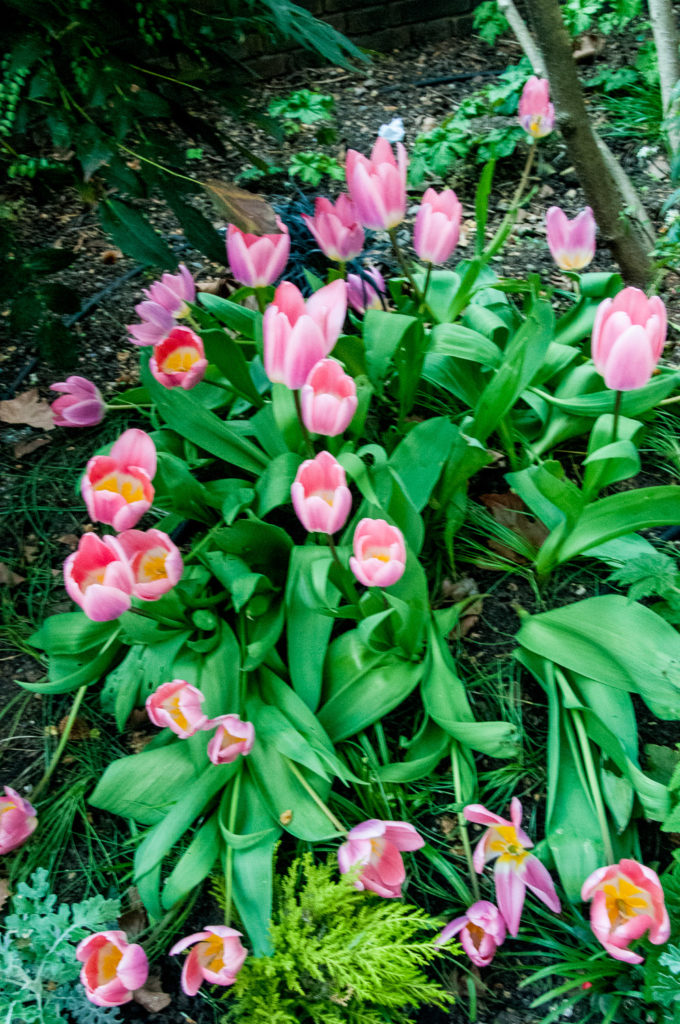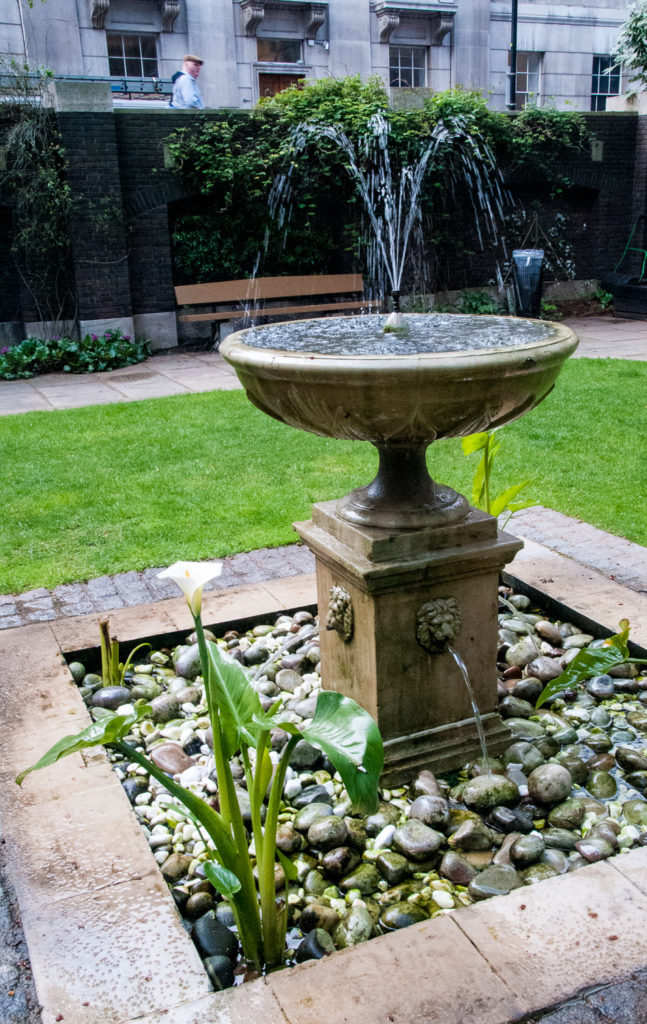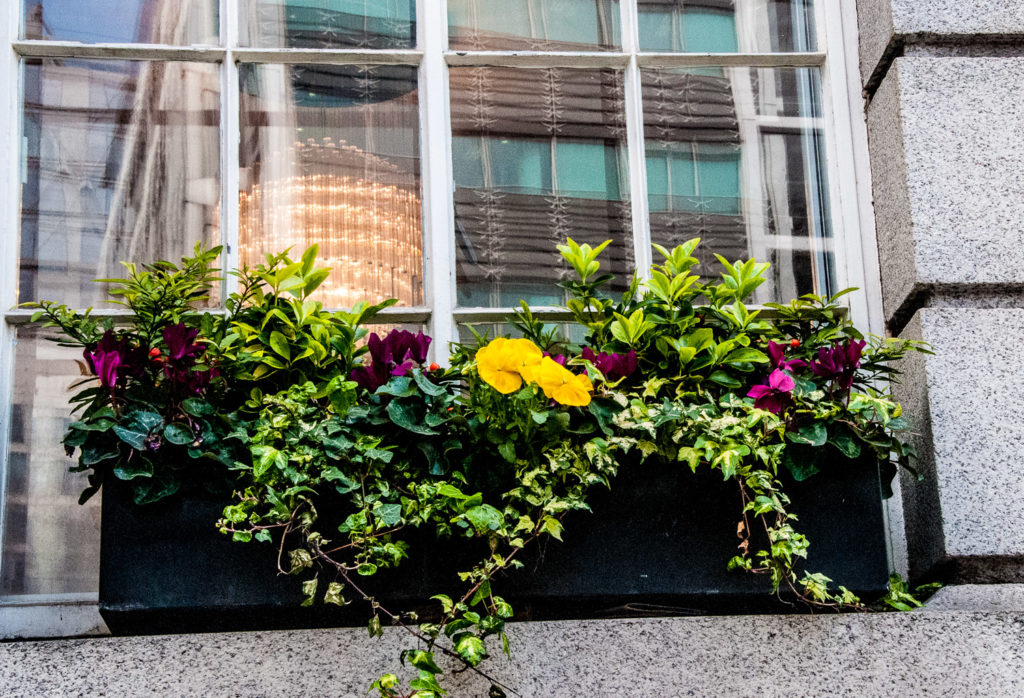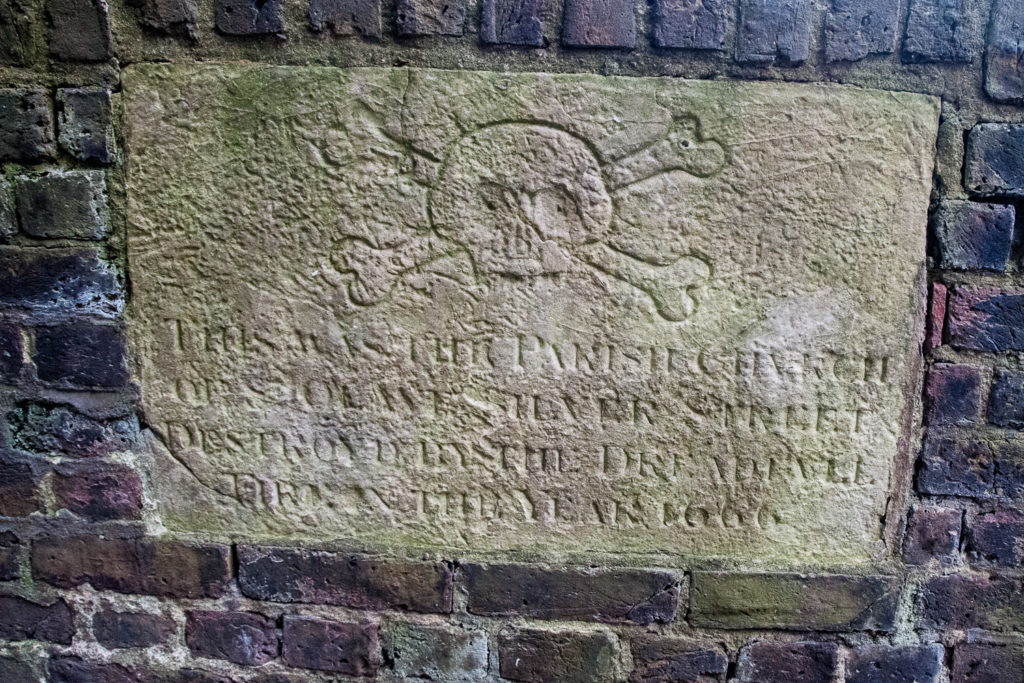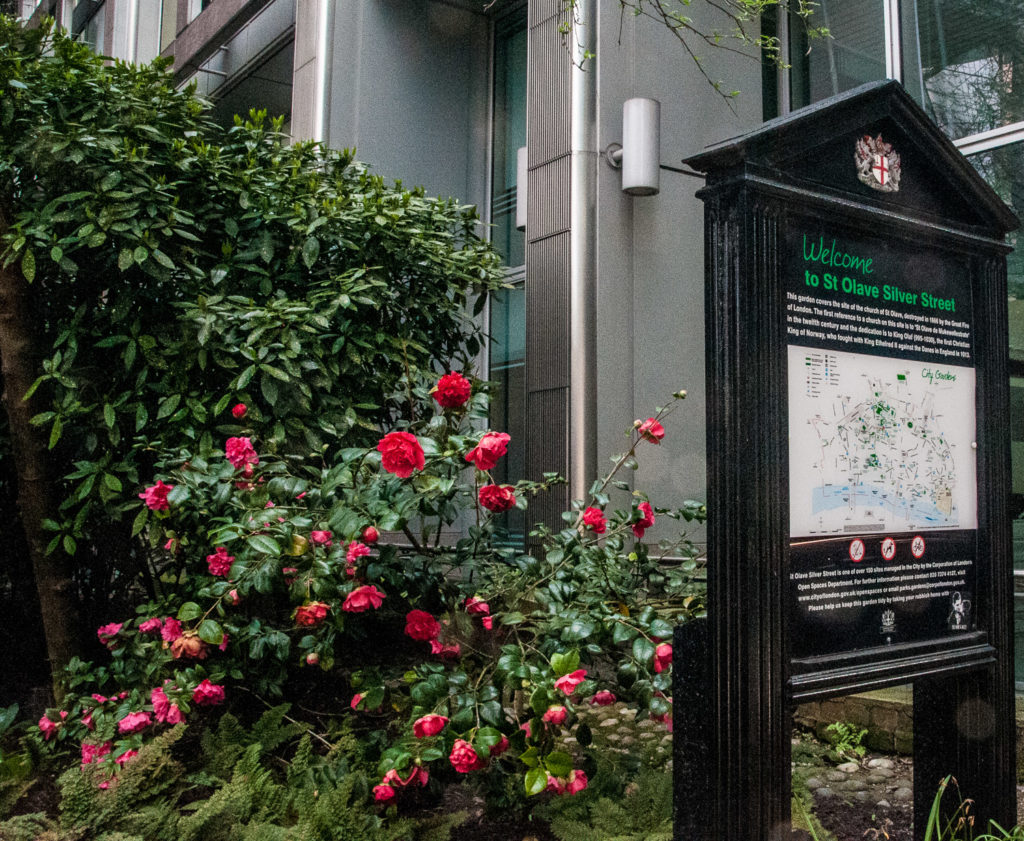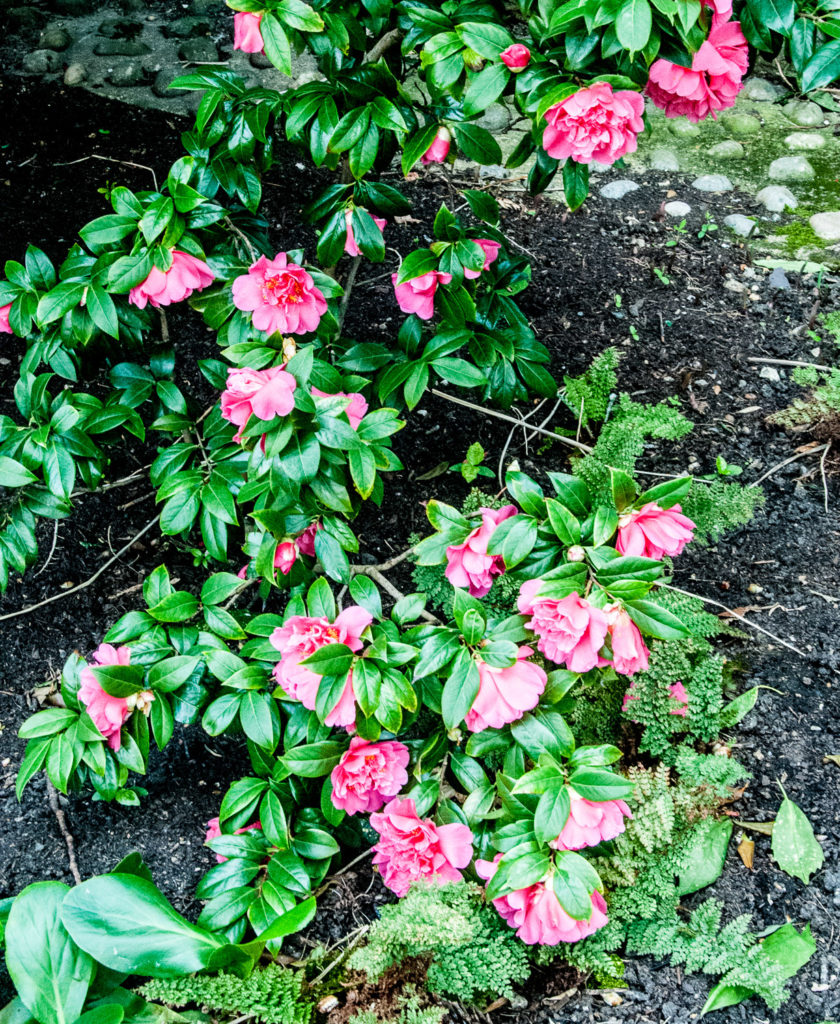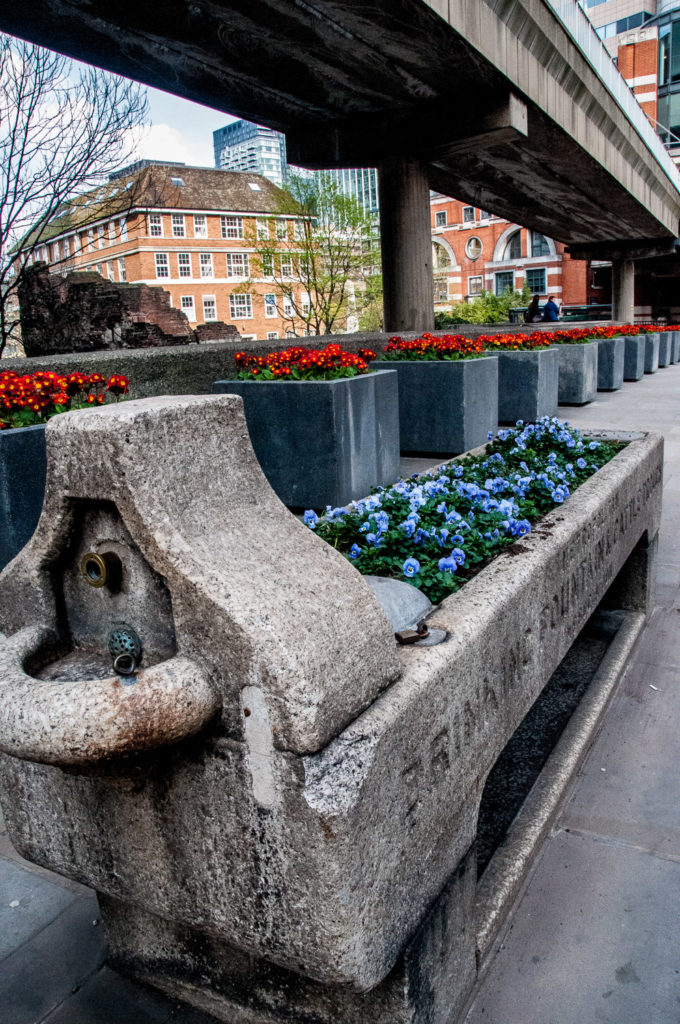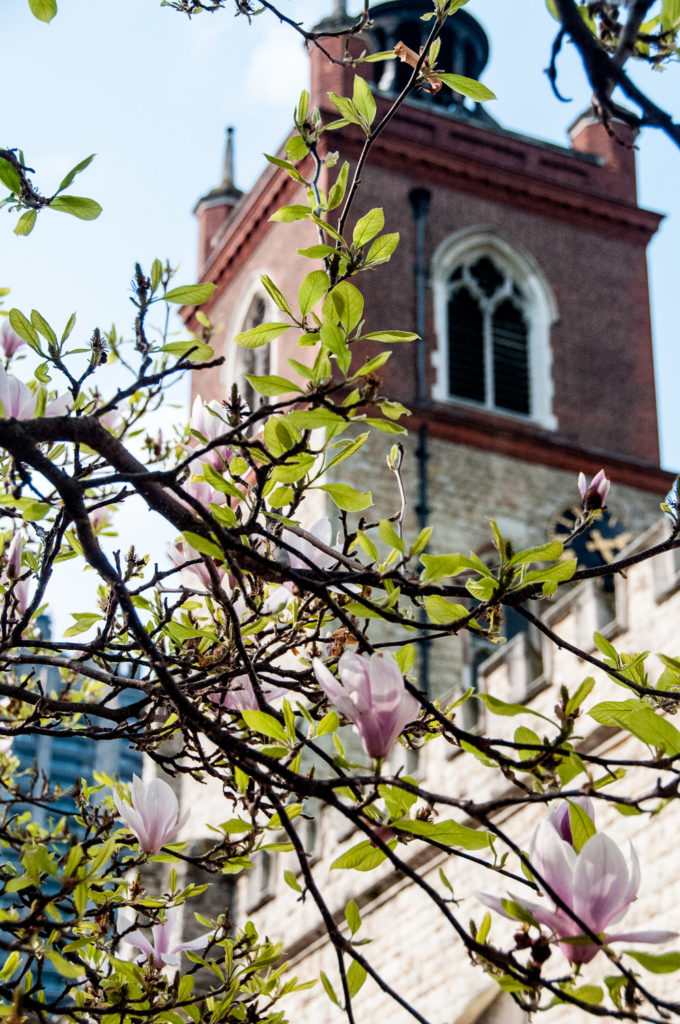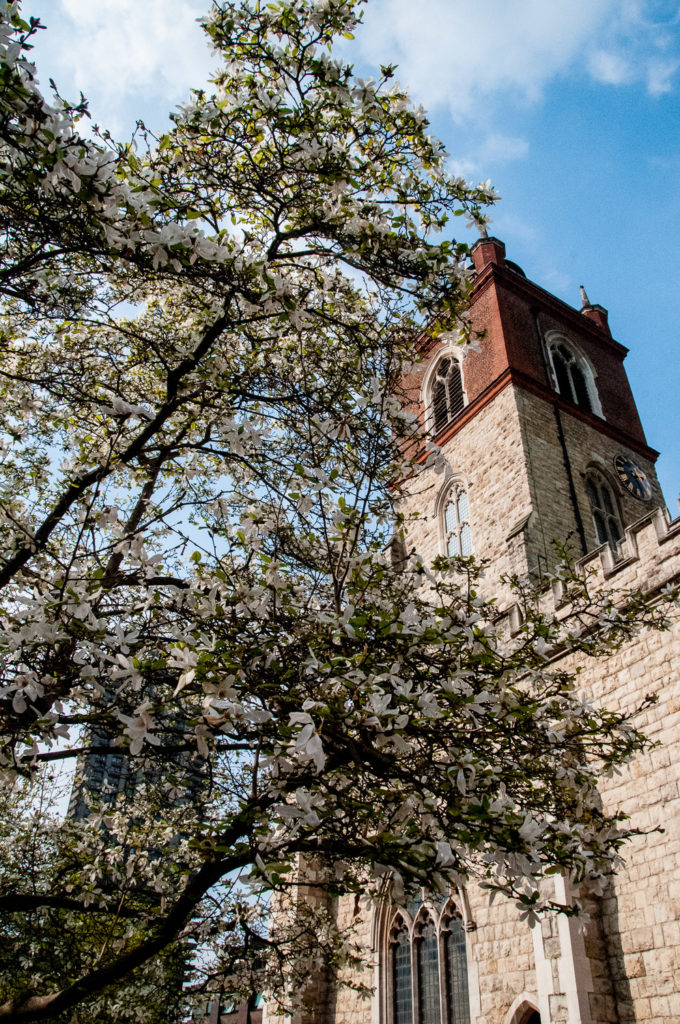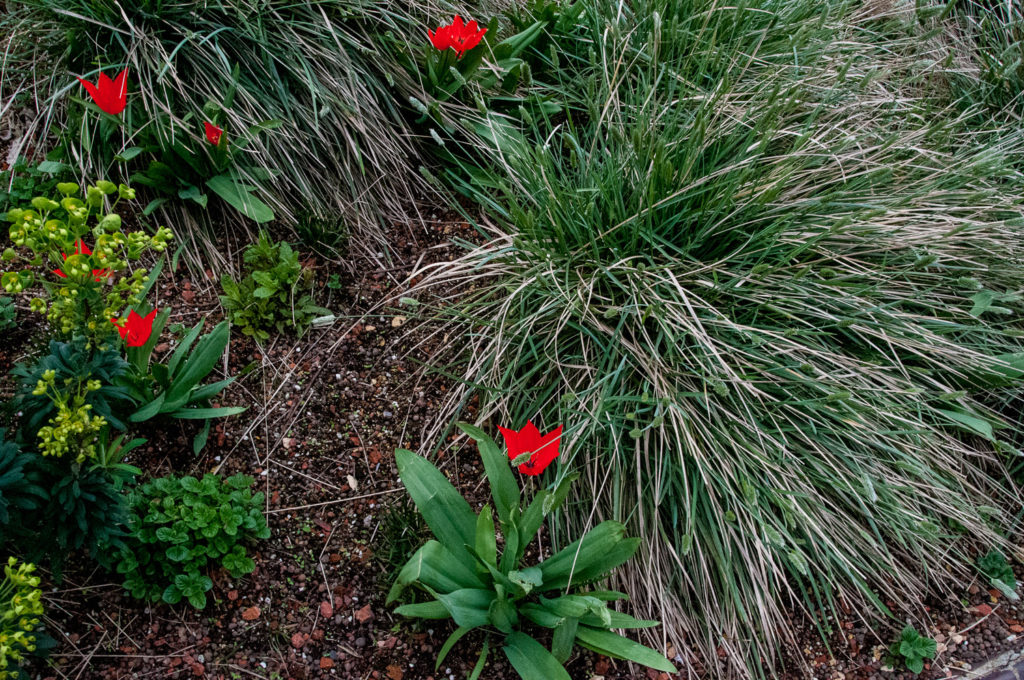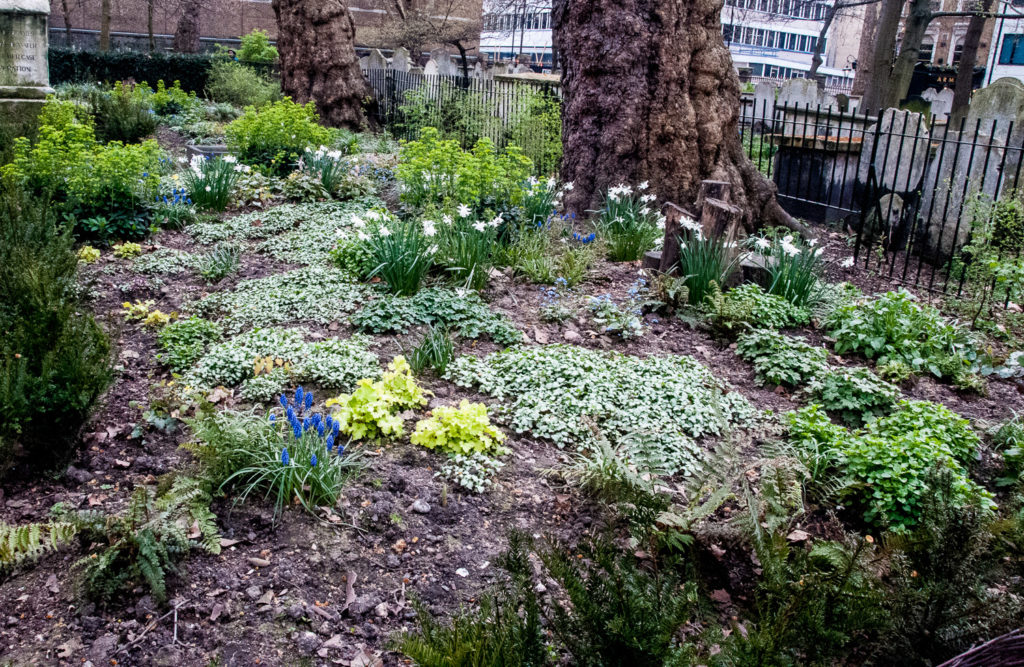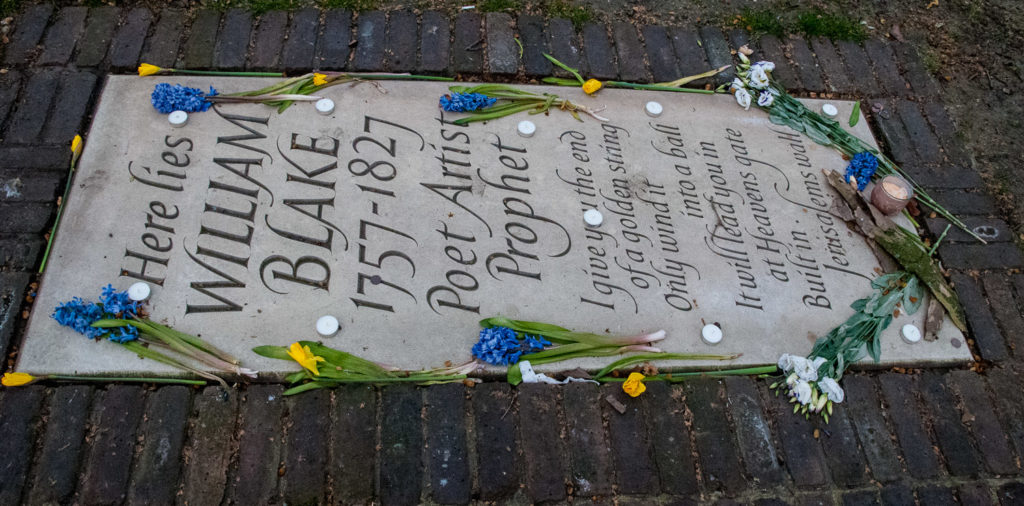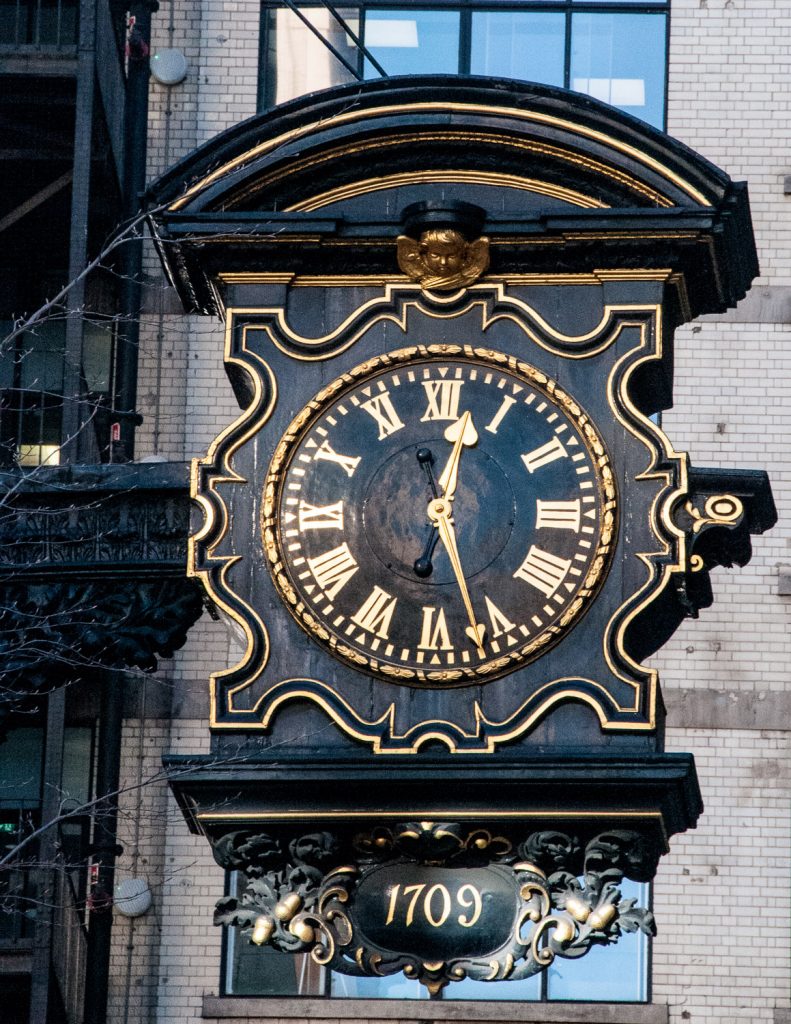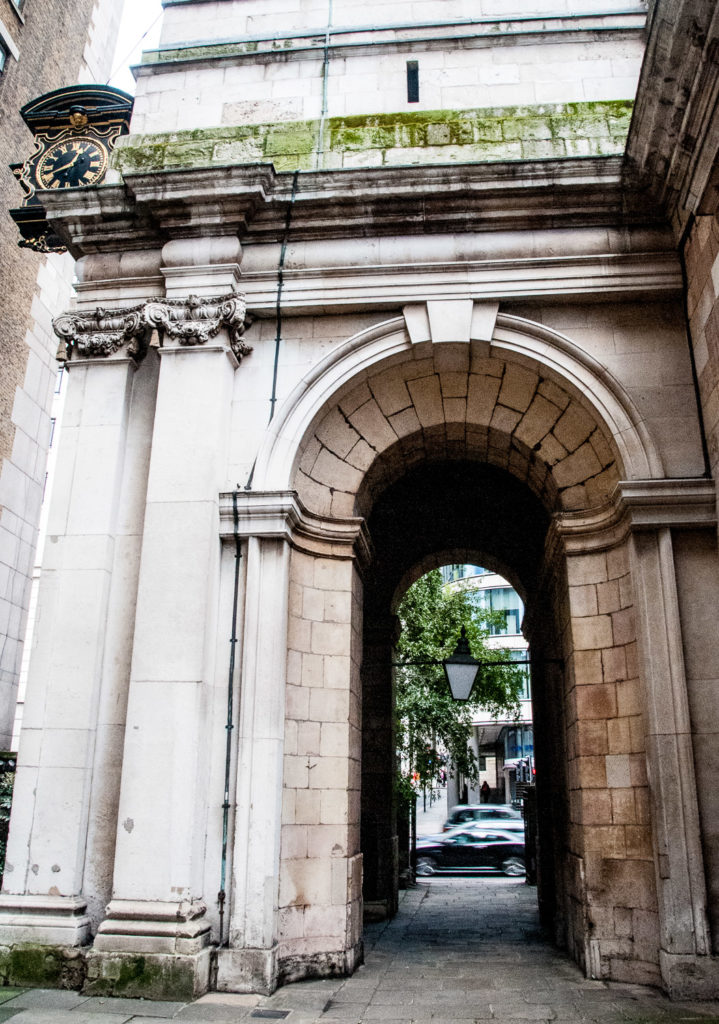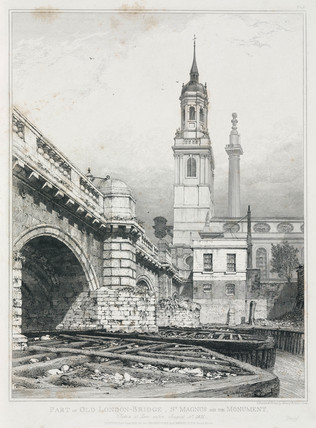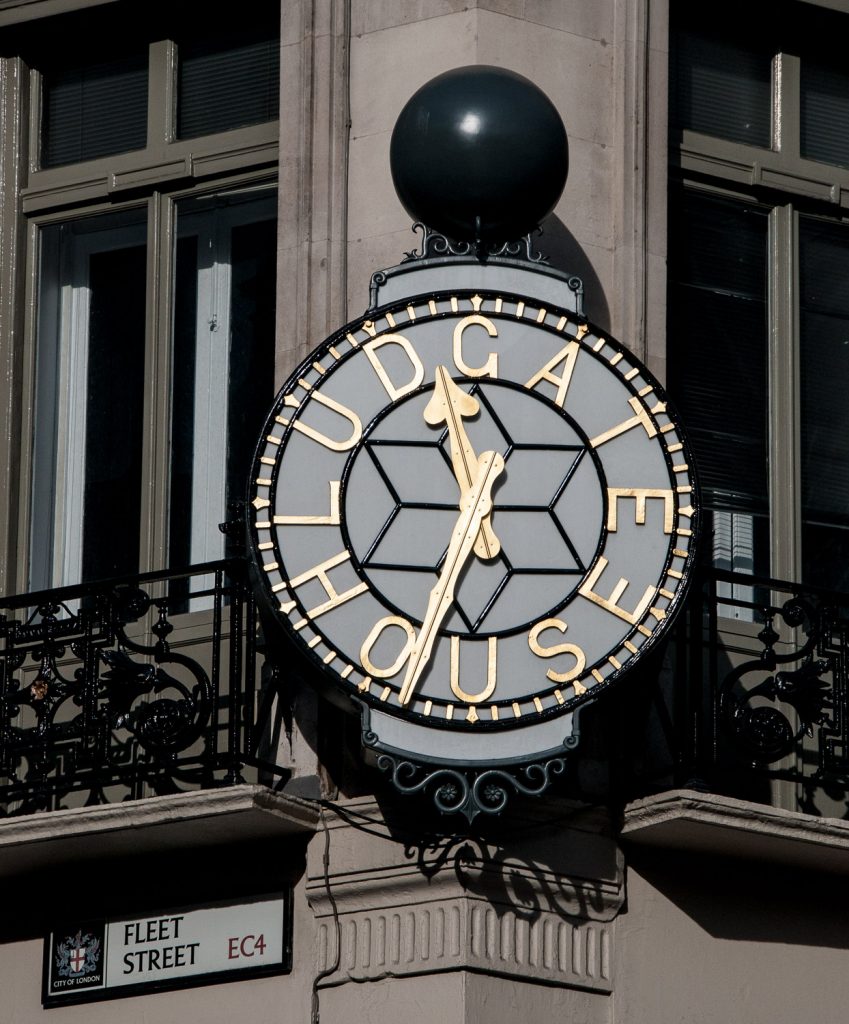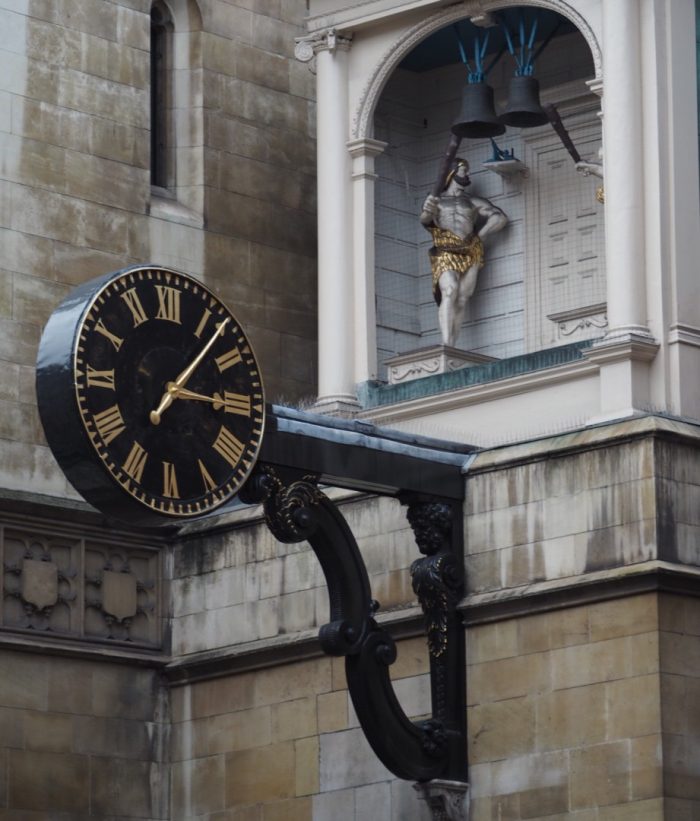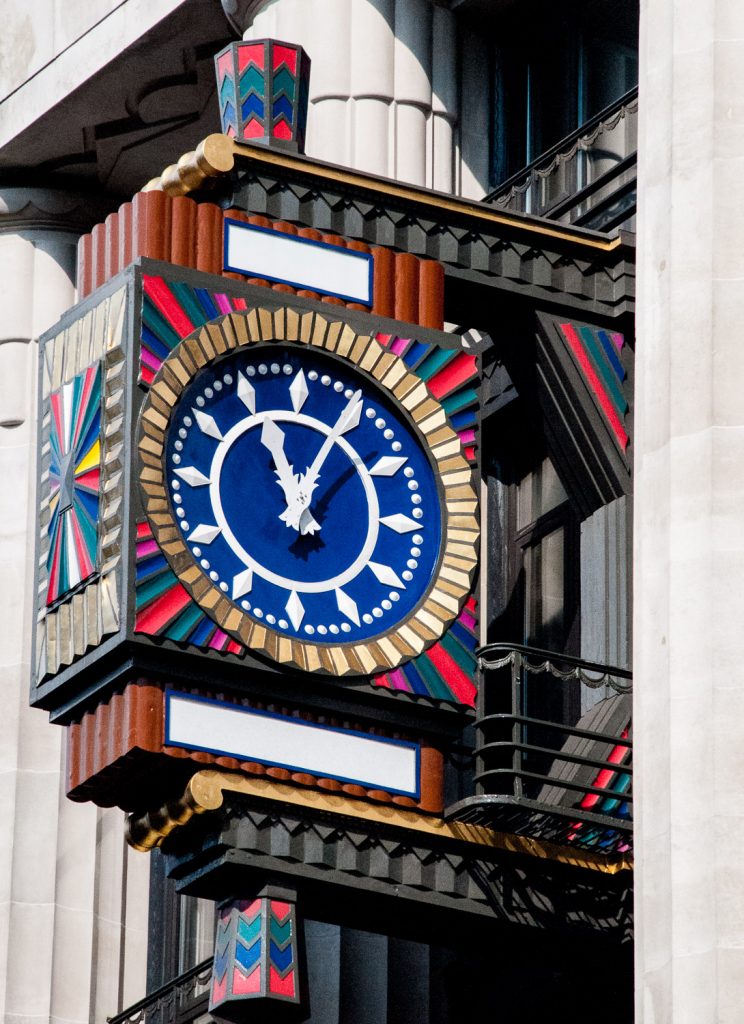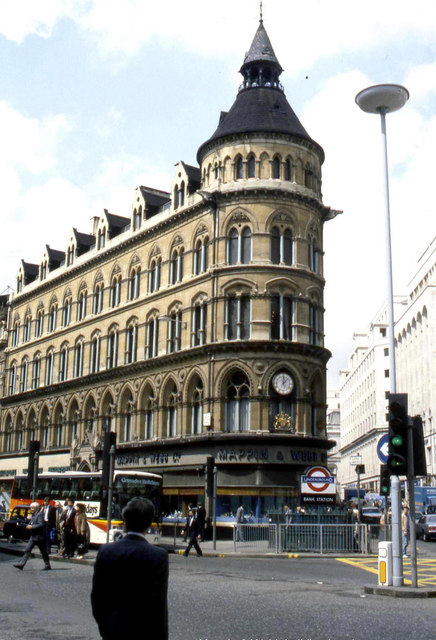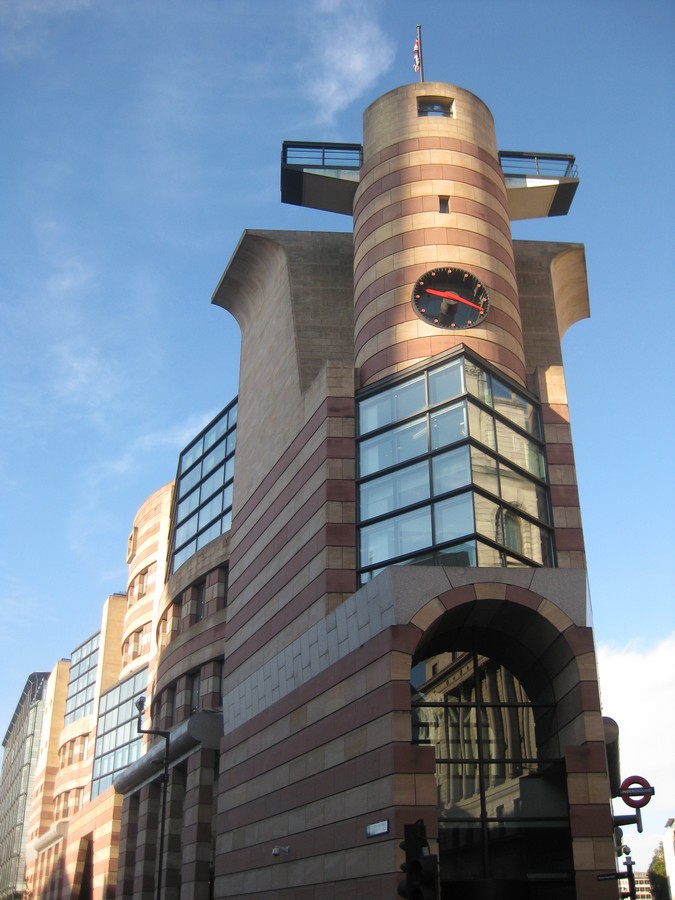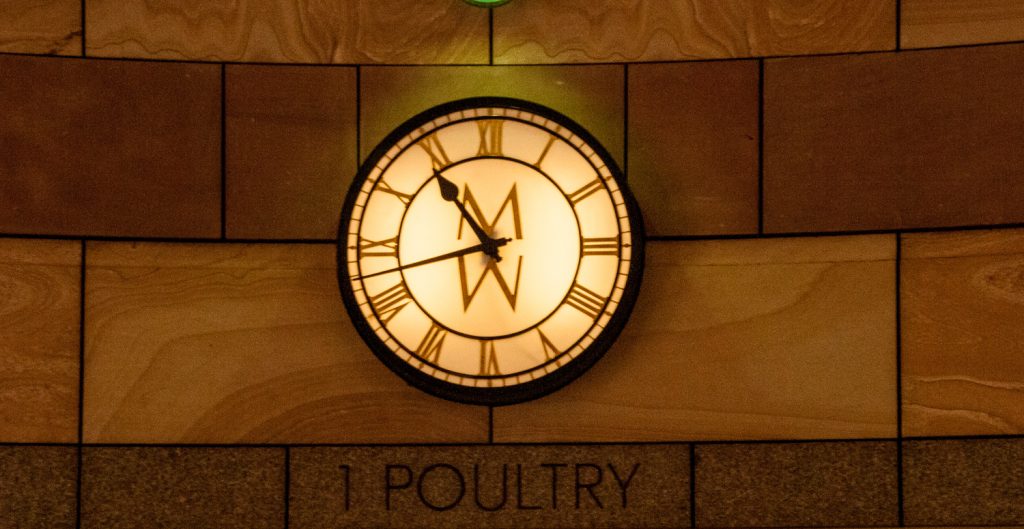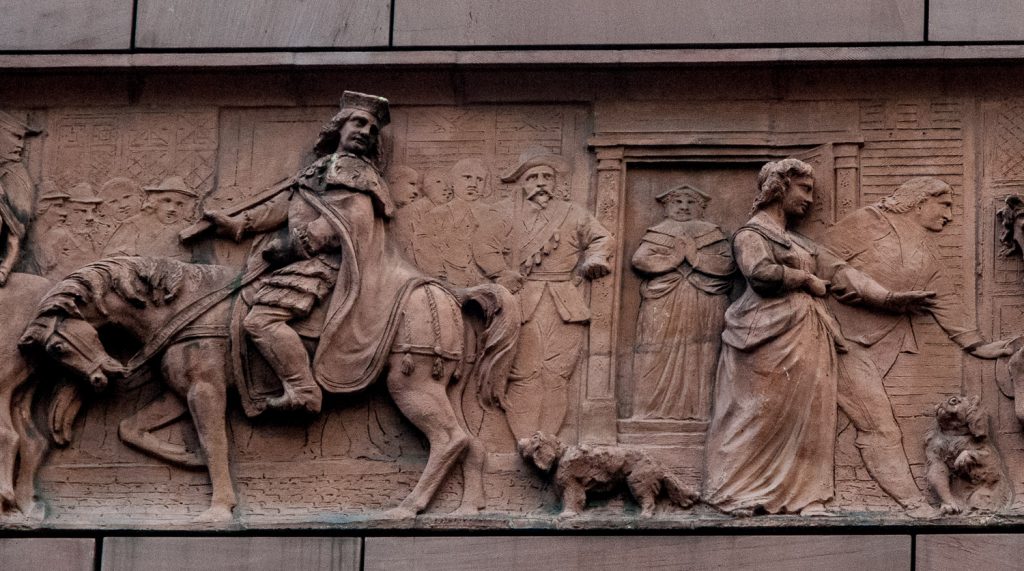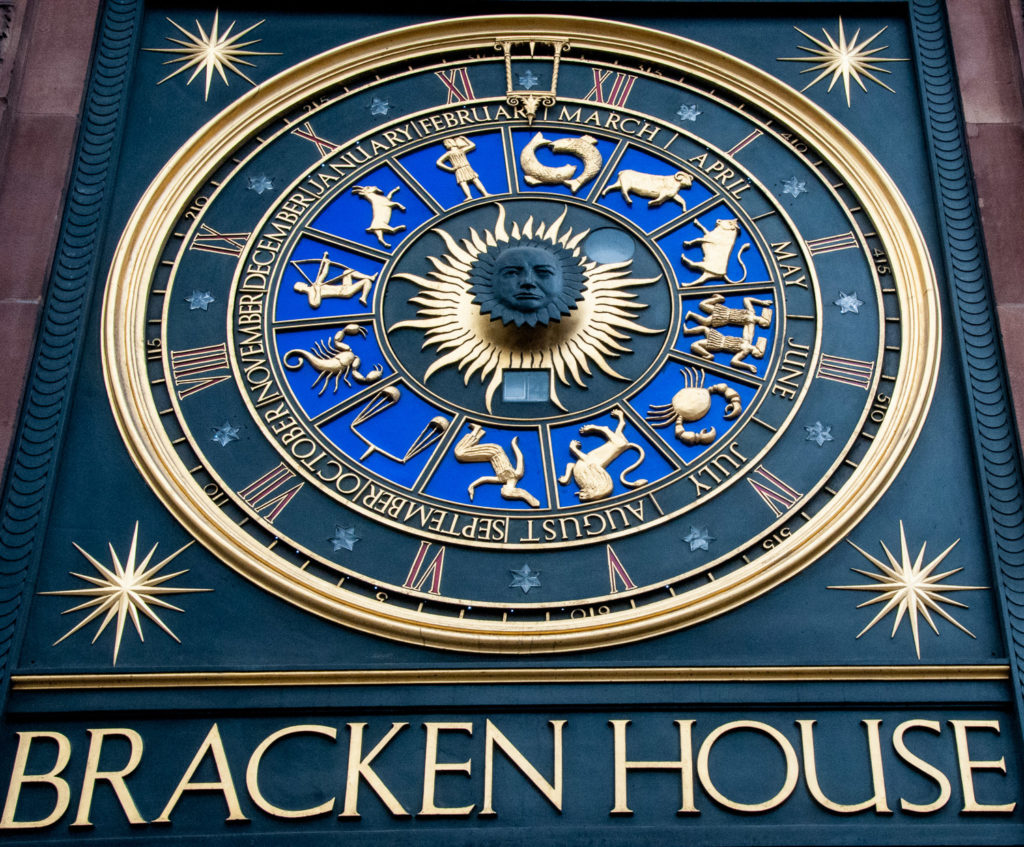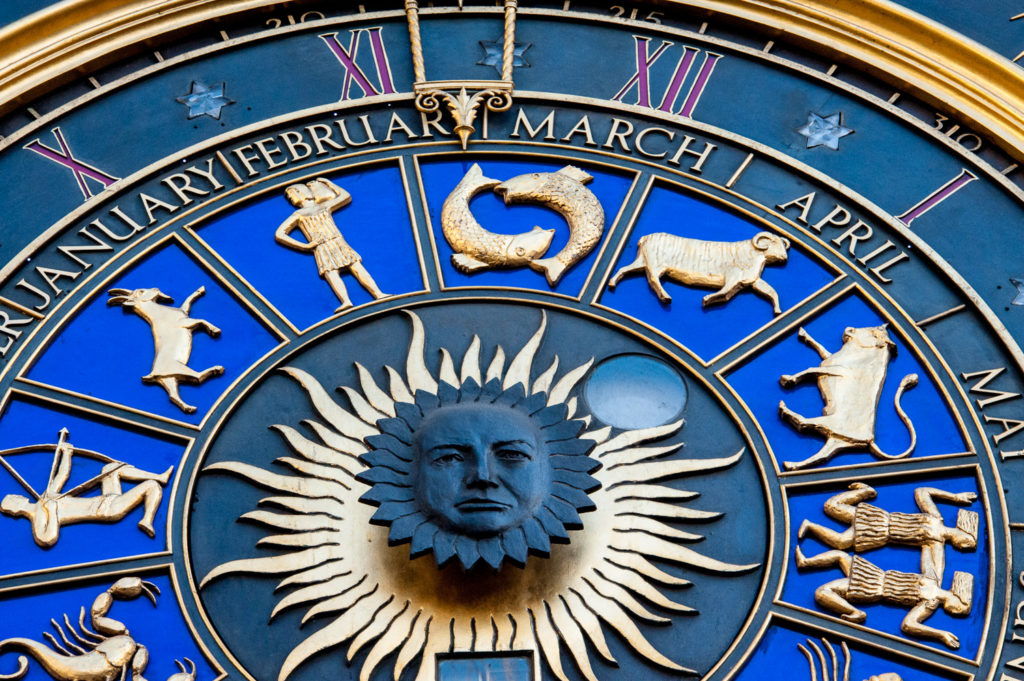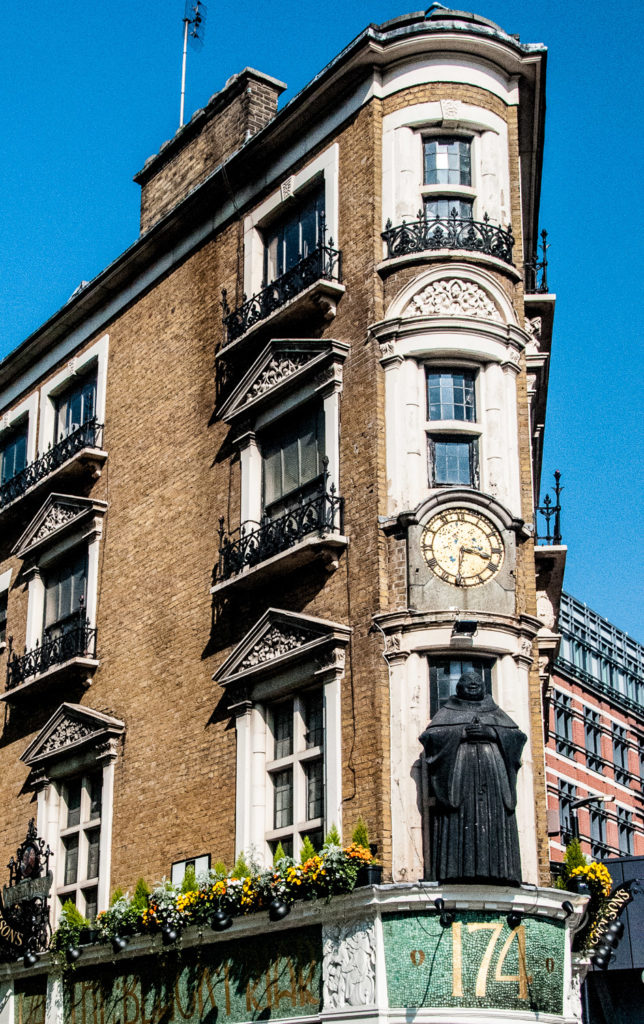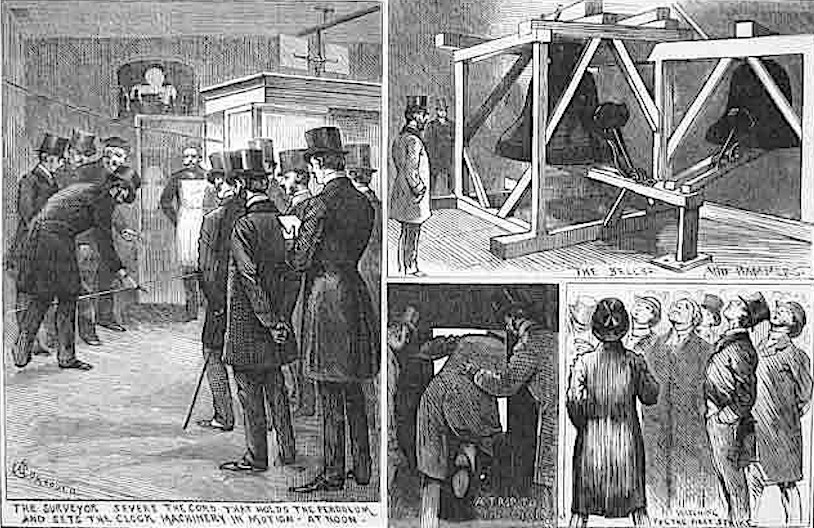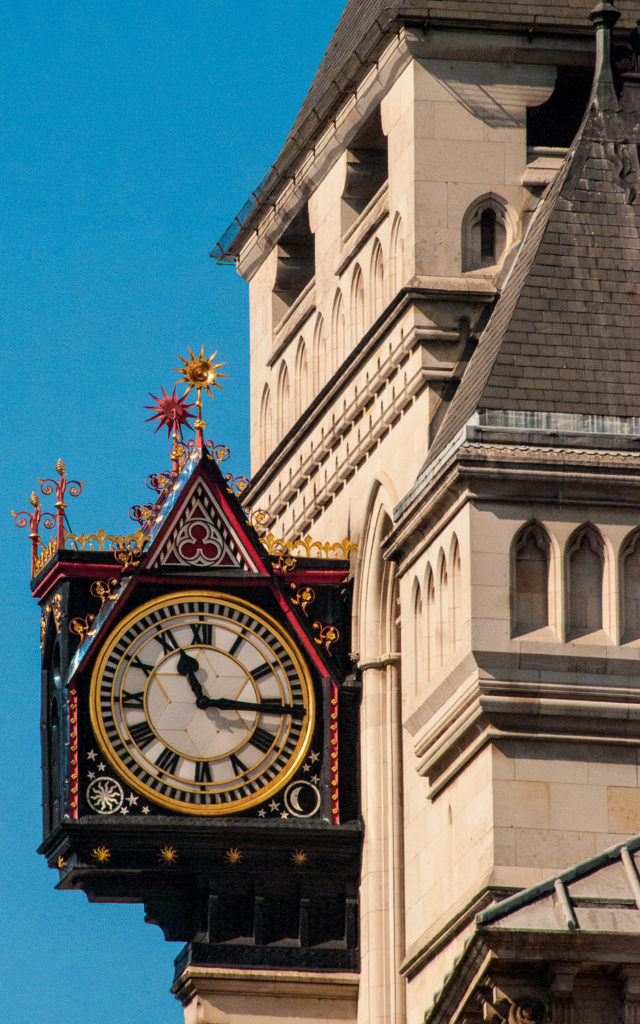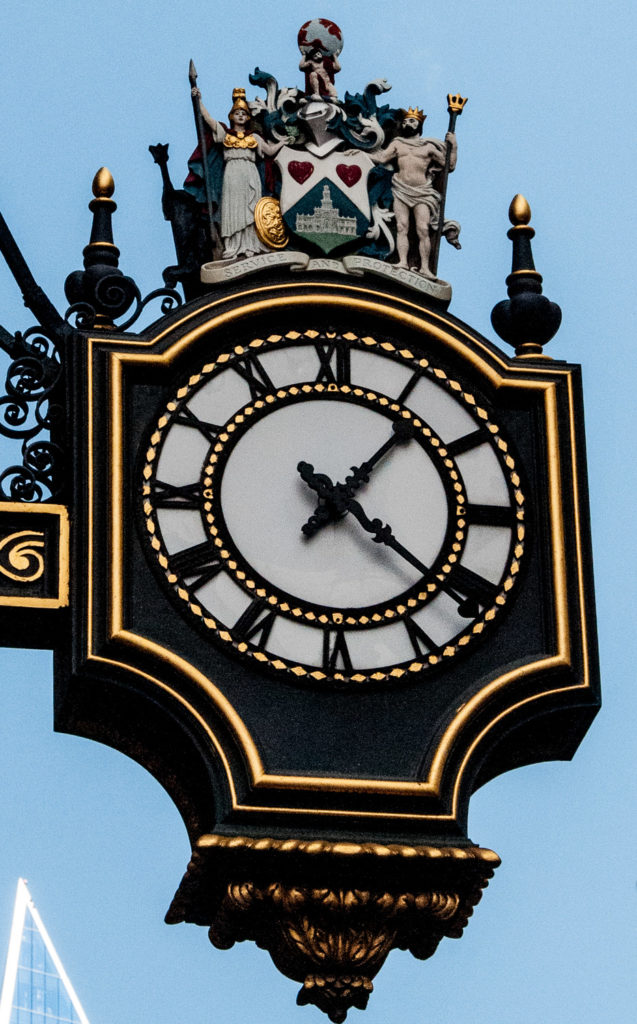Every now and then at the weekend I see film crews going about their business and using the City as a location. This prompted me to see what I could find regarding films that have already been released, and whether I could include some excerpts in my blog. I was not disappointed and hope you enjoy watching the results of my research.
First up is Children of the Damned. Released in 1964, it tells the story of six mysterious children, apparently born without fathers, who possess extraordinary telekinetic powers. They come to be seen as a threat to humanity and are hunted down. They take refuge in a derelict church which is eventually destroyed by the army.
The building used to portray the outside of the church is St Dunstan in the East on St Dunstan’s Hill (EC2R 5DD). Here is a recent picture with the Walkie Talkie lurking in the background …
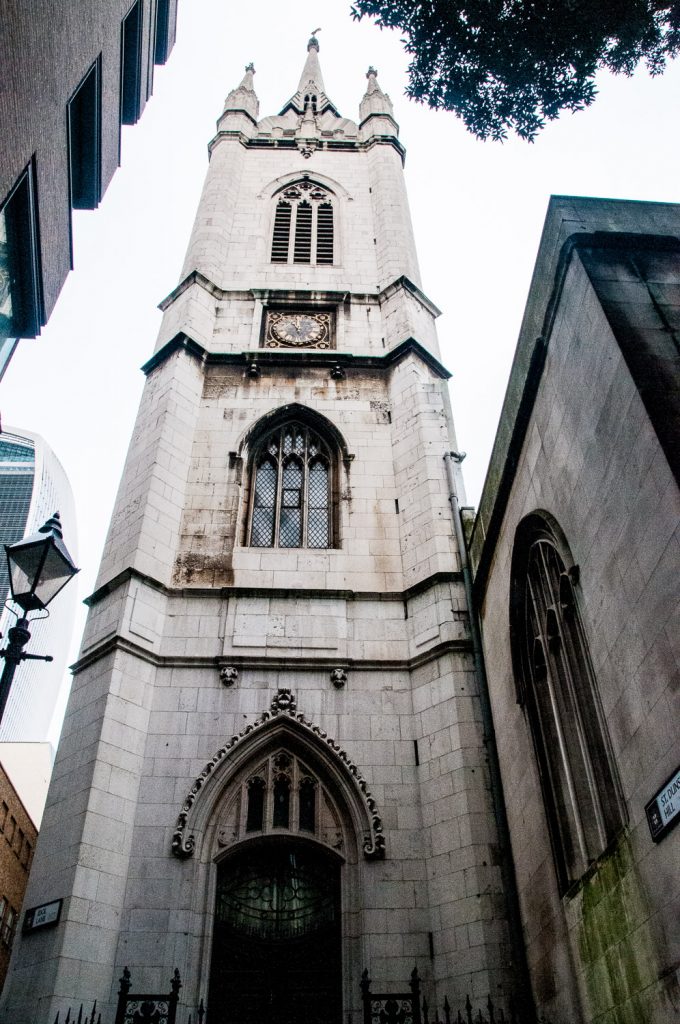
And here is a screen shot of two of the protagonists entering the church where the children are hiding. Little do they know what fate awaits them …
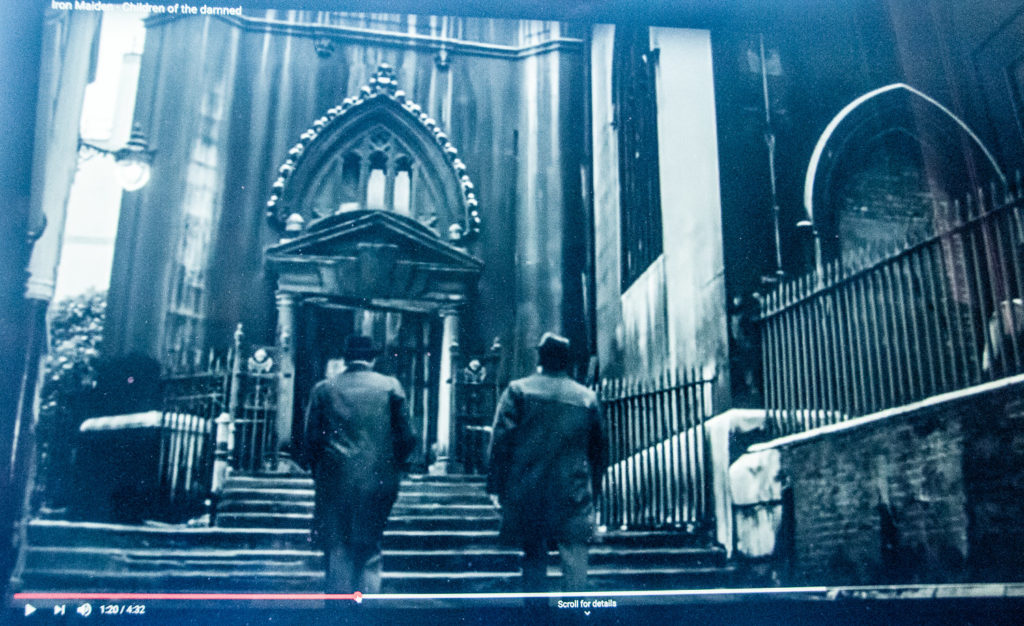
I found this great four and a half minute sequence of scenes from the film accompanied by appropriate music by Iron Maiden (you may want to adjust the sound accordingly!). Click here for the link – I love it.
Also arriving in UK cinemas in 1964 was Mary Poppins featuring the lovely Julie Andrews. The film was also notorious for Dick Van Dyke’s appalling Cockney accent.
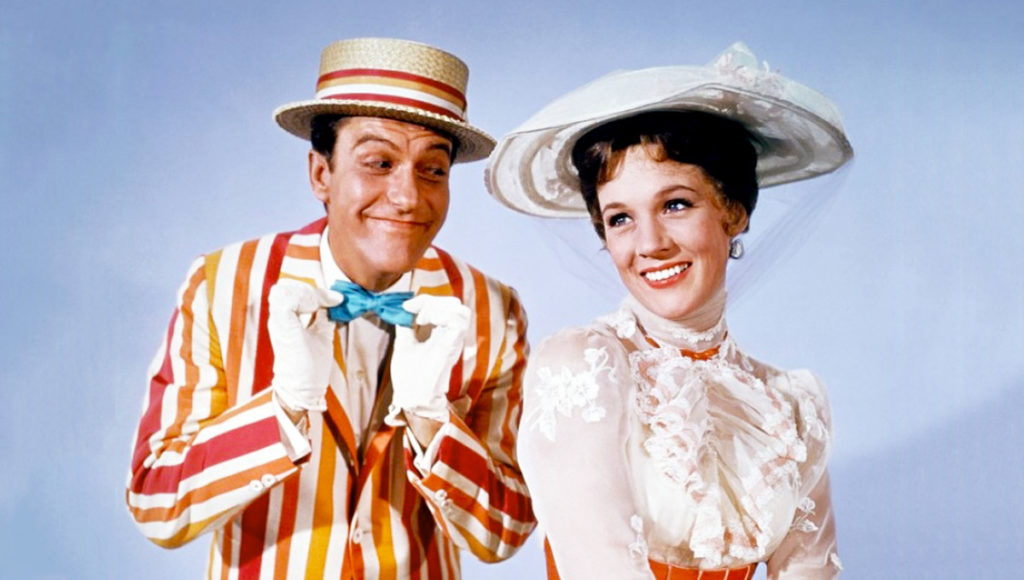
A scene from the film includes the song Feed the Birds, Tuppence a Bag, where an old lady is doing just that whilst sitting on the steps of St Paul’s Cathedral.
Click here to watch the sequence and hear the song.
It is, sadly, partly trick photography and the sweet old lady was filmed in a studio in California. The song was said to be Walt Disney’s favourite and the old lady was the Academy Award winning actress Jane Darwell who made her first of hundreds of movies in 1913. She was specifically chosen for the part by Disney himself and it was her last role.
More recently, fans of the Harry Potter movies have been prowling the City spotting familiar locations. Leadenhall Market is popular …
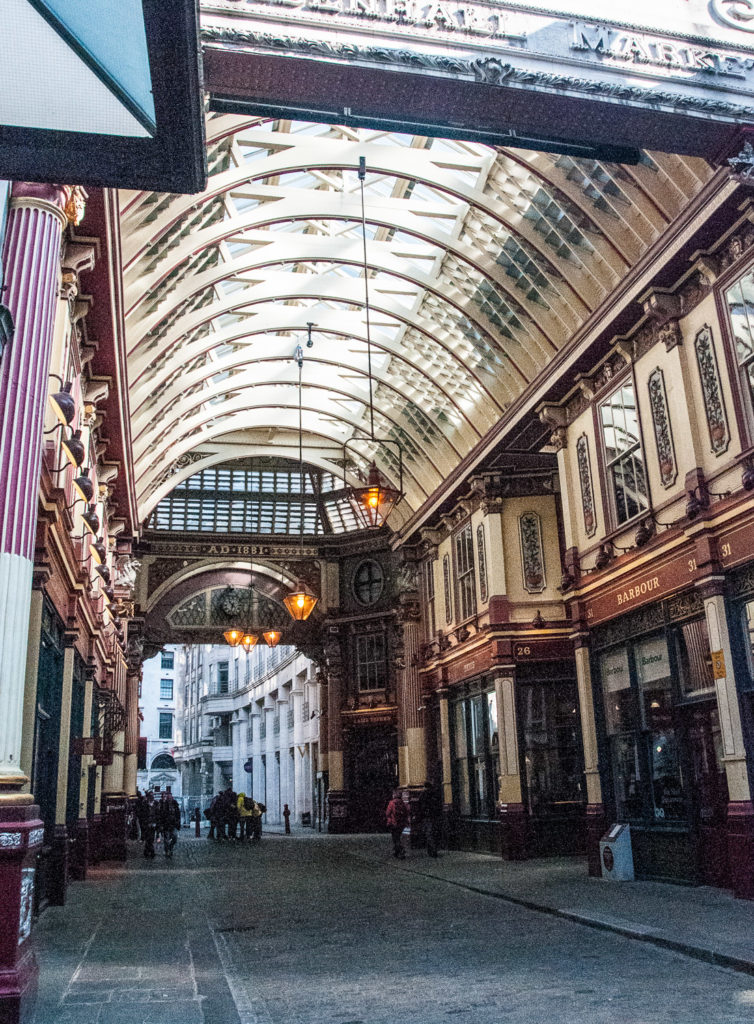
Apparently the cobbled, covered market stood in for Diagon Alley in the first Harry Potter film.
In a later film, however, Hagrid and Harry enter the Alley through the blue door of the Leaky Cauldron pub …
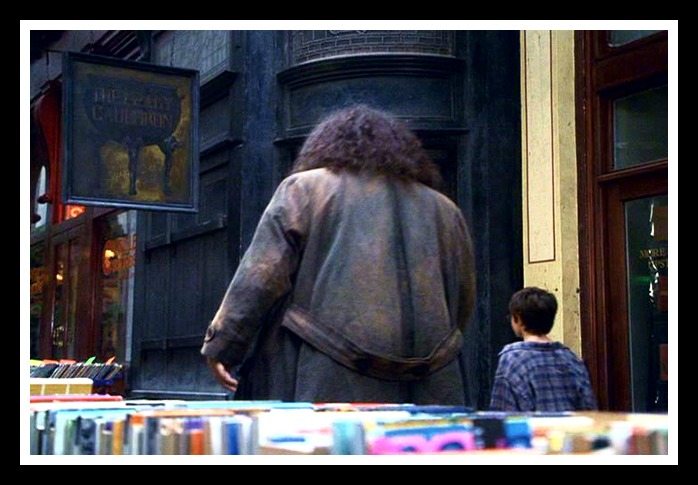
And here it is at 42 Bull’s Head Passage (EC3V 1LU), still part of Leadenhall Market …
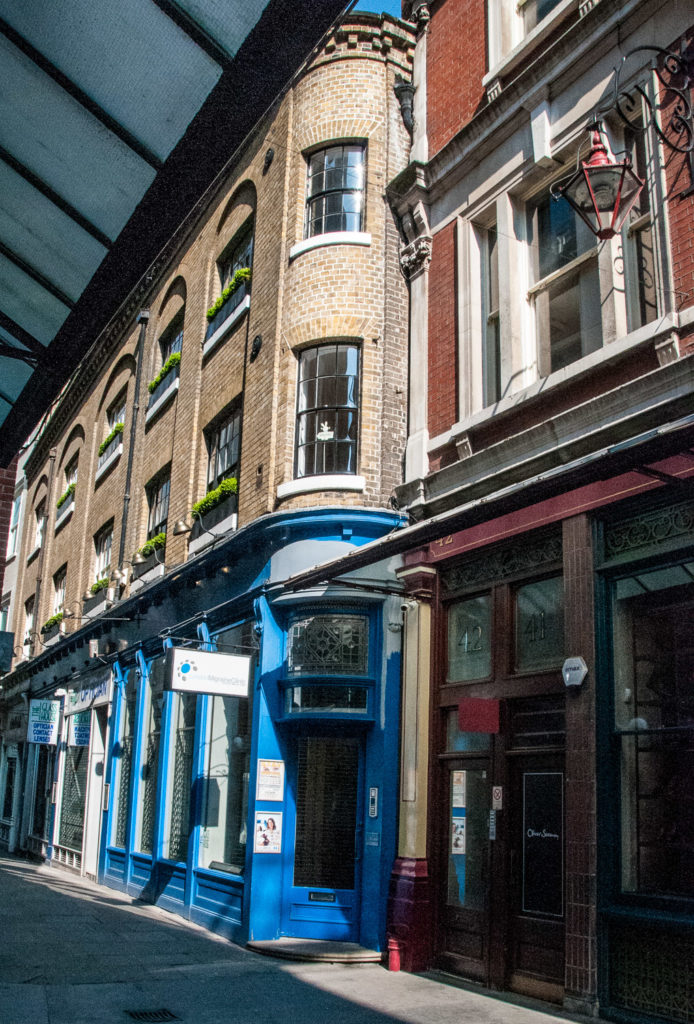
The Millennium Bridge features in Harry Potter and the Half-Blood Prince …
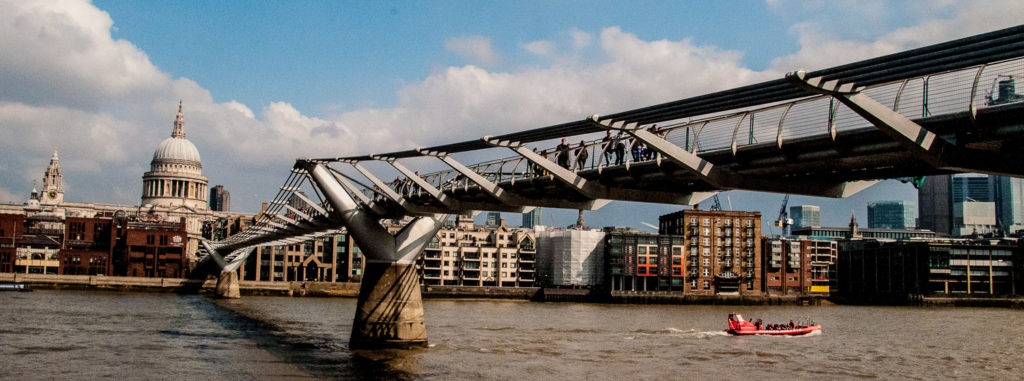
There is a really scary sequence as the Muggle World is attacked by Voldemort and the Death Eaters, with the bridge a particular target. You can view it if you click here.
Again back in time, looking at a TV series called The Professionals which was broadcast from 1977 to 1983. Inside the secure corridors of Criminal Intelligence 5, a high-level British anti-crime unit, George Cowley hands out tough assignments to his two top agents: thuggish William Andrew Philip Bodie, who favours a ‘hit first, ask questions later’ style, and the more cerebral Raymond Doyle, a former Docklands police constable …
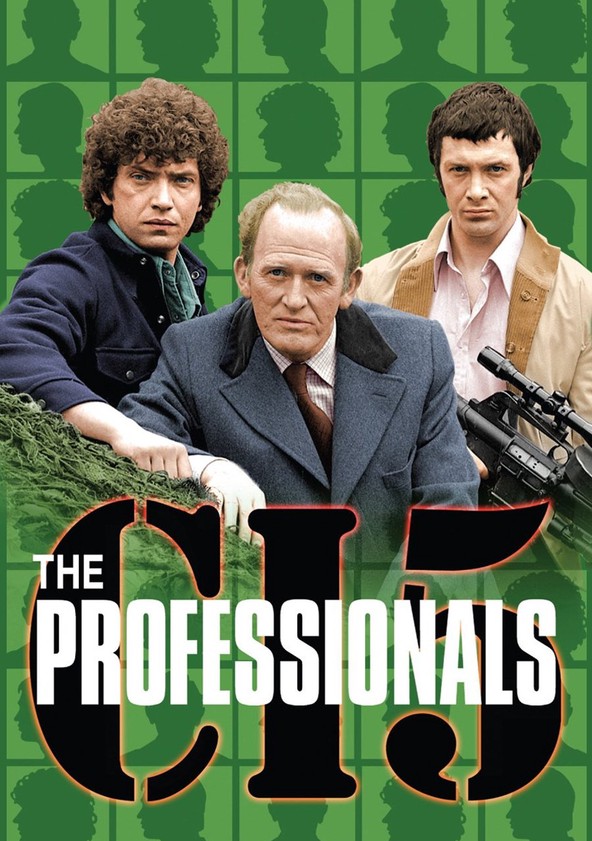
The opening sequence of the second series closes with the trio leaving the CI5 headquarters (aka the old Port of London Authority building in Trinity Square, EC3N 4AJ) .
You can view it here – it’s the first 45 seconds. It’s followed by half an hour of extracts from individual episodes. Ideal viewing if you are interested how cultural and popular fashion trends have changed over the last 30 plus years!
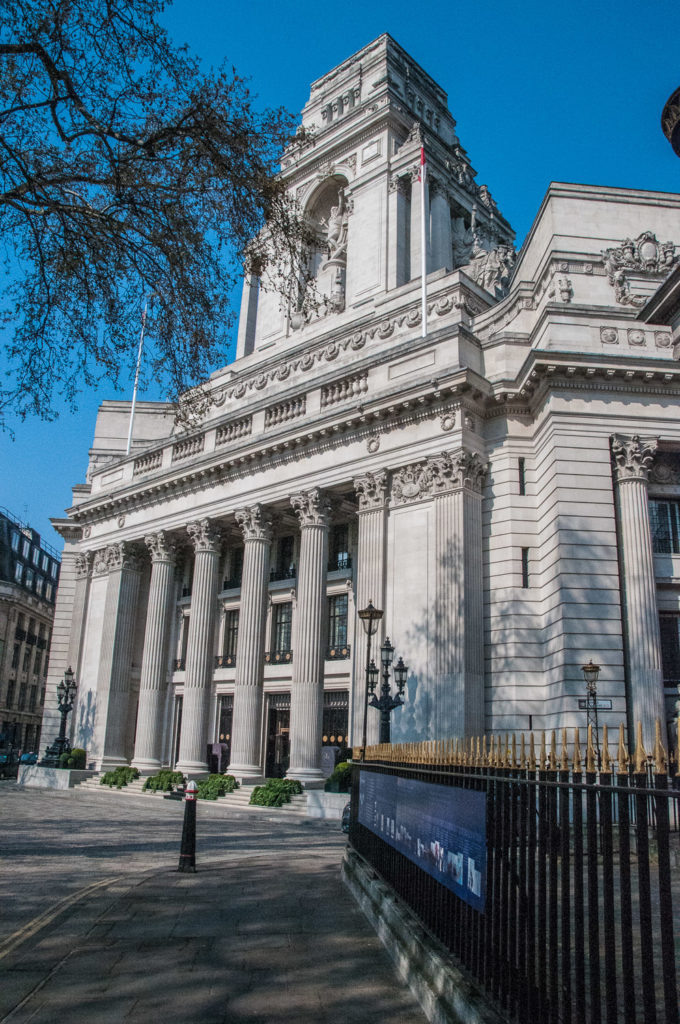
The building also featured in the James Bond film Skyfall. Here is Dame Judi Dench as M arriving for a meeting with the Chairman of the Security & Intelligence Committee …
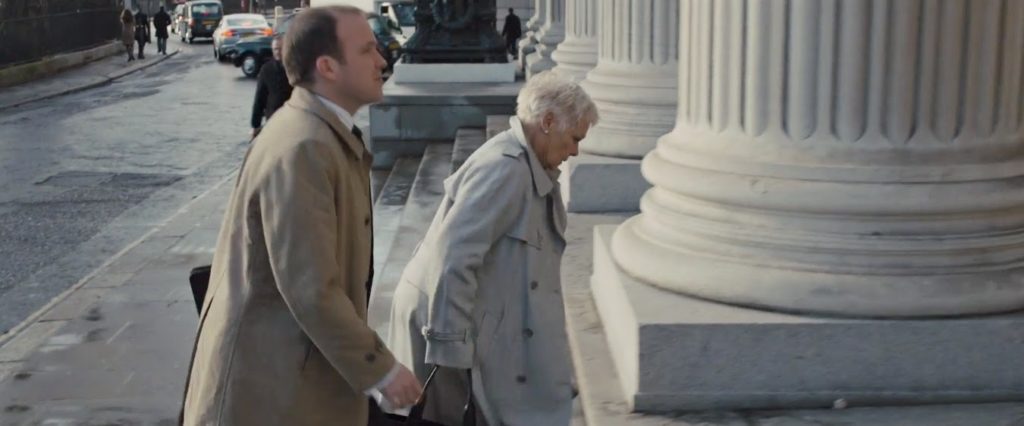
That’s all for now.
I am going to carry on researching and hopefully will have some more stories and film clips to put in a future blog.
The Cracksman
